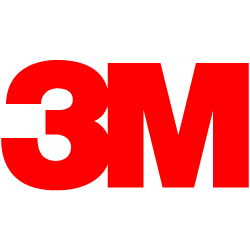Design Process
Conceptualization Process
Process for research, experimental and proof-of-concept projects.
Commercialization Process
Process for projects of or moving into production scale, e.g., an NPI project or a project already in commercialization. 3M uses a phase-gate process which consists of the following gates:
Apply Best Practices
Practical Concerns
One difference between developing concepts or working on proof-of-concepts projects and products commercialization is about decisions you make along the way. For example, it’s natural to choose a technology or platform that will optimize the experience for the majority of the target users for a PoC work, whereas in commercialization, it may be imperative to instead favor a technology that satisfies the “lowest common denominator”, or even more pragmatically, a technology that 3M or our partner already has the competency of.
Lean and Agile Development
3M has started introducing agile methodology with the existing, Lean Six Sigma (phase-gate processes) method. Lean Six Sigma is a framework that aims to improve performance by systematically reducing defects and variations in the manufacturing process. Started as an approach to software development, Agile favors “failing quickly”, starting from the minimum viable product (MVP), iteratively building it and incrementally evolving it with customers in the feedback loop; the goal is to respond quickly and nimbly to the constant changes from the customers and the competition.
Both Agile and Lean Six Sigma advocate collaboration, tightened process steps and culture change. Agile focuses on adaptive planning, early delivery and continuous integration. Lean Six Sigma, by contrast, emphasizes systematic planning and documentation from inception to completion, through structured phases.
Organizational Concerns
- Start defining the objectives, scope and success criteria with the team and key stakeholders from the beginning of the project.
- Start working on design brief as early as possible.
- Develop a concept while keeping patent application in mind.
- Plan user research while keeping CDA process in mind.
- Understand related regulations and standards. For example, FDA has provided guidance to usability and human factors engineering and has rigorous requirements for designing and documenting user research as part of the medical device product development process.
- Understand 3M NPI processes and how to collaborate with multidisciplinary teams.
- Be adaptive. Each project, team, and team culture are different. Don’t be afraid to question authority and de facto standards while following the processes.
Although it’s arbitrary to distinguish between the design agency model and the in-house model, we often observe that for the conceptualization projects, 3M design acts more in the agency mode, framing the broad and high-level problems, adventuring in white spaces, creative brainstorming in divergence-convergence cycles, and conceiving and selling a vision, while for commercialization products, 3M design may transition into the in-house agency mode to be more tightly integrated with the product teams, focusing on building and shipping the experience.

